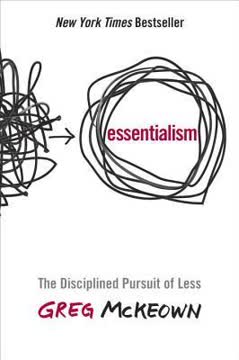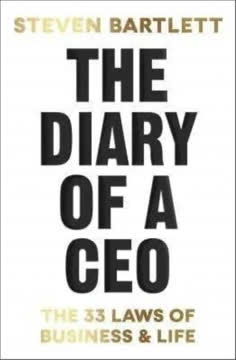Key Takeaways
1. Set Clear, Specific, and Measurable Goals
"Without goals, and plans to reach them, you are like a ship that has set sail with no destination." — Fitzhugh Dodson
Clarity is key. When setting goals, be specific about what you want to achieve and by when. Vague aspirations like "get healthy" or "save money" are not enough. Instead, set clear objectives such as "lose 20 pounds in 6 months" or "save $10,000 for a down payment by December 31st."
Measurability matters. Ensure your goals are quantifiable so you can track your progress. This allows you to:
- Monitor your advancement
- Stay motivated by seeing improvement
- Make adjustments if you're falling behind
Remember to set realistic yet challenging goals. Unrealistic objectives can lead to disappointment, while overly easy ones may not push you to grow.
2. Identify and Overcome Limiting Beliefs
"Many people are passionate, but because of their limiting beliefs about who they are and what they can do, they never take actions that could make their dream a reality." - Tony Robbins
Self-awareness is crucial. Limiting beliefs are often deeply ingrained and can sabotage your efforts without you realizing it. Common limiting beliefs include:
- "I'm not smart/talented/skilled enough"
- "I don't deserve success"
- "It's too late for me to change"
Challenge your assumptions. To overcome these beliefs:
- Identify them by paying attention to your self-talk
- Question their validity with evidence from your past successes
- Replace them with empowering beliefs that support your goals
Remember, your beliefs shape your actions, which in turn determine your results. By addressing limiting beliefs, you remove a significant barrier to achieving your goals.
3. Create a Detailed Action Plan with Milestones
"A goal properly set is halfway reached." — Zig Ziglar
Planning precedes success. Once you've set clear goals, break them down into actionable steps. This process:
- Makes large goals less overwhelming
- Provides a roadmap for daily actions
- Allows you to celebrate small wins along the way
Milestones maintain momentum. Set intermediate targets to track your progress. For example, if your goal is to lose 20 pounds in 6 months:
- Month 1: Lose 4 pounds
- Month 3: Lose 10 pounds
- Month 5: Lose 16 pounds
These milestones help you stay on track and provide opportunities to adjust your approach if needed. Remember to make your action steps specific, assigning deadlines to each task to create a sense of urgency and accountability.
4. Modify Your Environment to Support Your Goals
"Environmental factors are commonly overlooked when setting goals."
Context influences behavior. Your surroundings can either support or sabotage your efforts. To increase your chances of success:
- Identify potential obstacles in your environment
- Remove or minimize distractions and temptations
- Add cues and tools that support your goals
For example, if you're trying to eat healthier:
- Remove junk food from your home
- Stock your kitchen with nutritious snacks
- Prepare meals in advance for busy days
By proactively shaping your environment, you make it easier to stick to your goals and reduce reliance on willpower alone.
5. Regularly Evaluate and Adjust Your Progress
"Evaluate" means that a goal needs to be monitored to promote consistent progress.
Flexibility fosters success. Regular evaluation allows you to:
- Celebrate successes and maintain motivation
- Identify areas for improvement
- Adjust your approach based on what's working and what isn't
Implement a review system. Set up weekly or bi-weekly check-ins to assess your progress. During these sessions:
- Review your action steps and milestones
- Analyze any obstacles you've encountered
- Brainstorm solutions to overcome challenges
- Adjust your plan if necessary
Remember, the goal-setting process is dynamic. Be willing to modify your approach or even your goals if circumstances change or you gain new insights.
6. Develop Supportive Habits and Routines
"Developing routines does indeed encourage developing good habits."
Consistency compounds. While goals provide direction, habits and routines drive daily progress. To support your goals:
- Identify key behaviors that contribute to your success
- Create routines that incorporate these behaviors
- Use triggers to prompt desired actions
For example, if your goal is to write a book:
- Set a daily writing time (e.g., 7-8 AM)
- Create a pre-writing routine (e.g., make coffee, review notes)
- Use a specific location or object as a trigger (e.g., sitting at your desk)
By developing supportive habits, you reduce the mental energy required to take action, making progress more automatic and sustainable.
7. Learn from Failure and Adapt Accordingly
"Every adversity, every failure, every heartache carries with it the seed of an equal or greater benefit." – Napoleon Hill
Failure is feedback. When you don't achieve a goal, resist the urge to give up or berate yourself. Instead:
- Conduct a "goal autopsy" to understand what went wrong
- Identify the root causes of the failure
- Use these insights to adjust your approach
Analyze objectively. Ask yourself:
- Was the goal realistic and truly important to you?
- Did you have the necessary resources and support?
- Were there unforeseen obstacles or changes in circumstances?
Remember, failure is a natural part of the growth process. By learning from setbacks and adapting your strategies, you increase your chances of success in future endeavors.
Last updated:
FAQ
What's "The P.R.I.M.E.R. Goal Setting Method" about?
- Comprehensive Guide: "The P.R.I.M.E.R. Goal Setting Method" by Damon Zahariades is a detailed guide on setting and achieving goals effectively.
- Structured Approach: It introduces a structured method called P.R.I.M.E.R., which stands for Pinpoint, Refine, Identify, Modify, Evaluate, and Revisit.
- Focus on Action: The book emphasizes creating actionable plans and maintaining focus to achieve personal and professional goals.
- Overcoming Obstacles: It also addresses common reasons for goal failure and provides strategies to overcome them.
Why should I read "The P.R.I.M.E.R. Goal Setting Method"?
- Practical Strategies: The book offers practical strategies that can be applied immediately to improve goal-setting and achievement.
- Self-Improvement: It is ideal for anyone looking to enhance their productivity and personal development.
- Comprehensive Coverage: The book covers various popular goal-setting systems, comparing their strengths and weaknesses.
- Action-Oriented: It encourages readers to take action and provides a clear roadmap to follow.
What are the key takeaways of "The P.R.I.M.E.R. Goal Setting Method"?
- P.R.I.M.E.R. Method: The method involves six steps: Pinpoint, Refine, Identify, Modify, Evaluate, and Revisit, each crucial for effective goal setting.
- Importance of "Why": Understanding the compelling reason behind each goal is essential for motivation and perseverance.
- Action Plans: Creating detailed action plans with milestones and deadlines is vital for tracking progress.
- Adaptability: Regularly revisiting and adjusting goals ensures they remain relevant and achievable.
What are the best quotes from "The P.R.I.M.E.R. Goal Setting Method" and what do they mean?
- "Failure Is Not An Option": This quote emphasizes the mindset that with the right method, any goal can be achieved.
- "Goals that are not written down are just wishes": Highlights the importance of documenting goals to make them tangible and actionable.
- "Our goals can only be reached through a vehicle of a plan": Stresses the necessity of having a structured plan to achieve goals.
- "Every adversity, every failure, every heartache carries with it the seed of an equal or greater benefit": Encourages viewing failures as learning opportunities.
How does the P.R.I.M.E.R. method work?
- Pinpoint: Identify your highest-priority ambitions by analyzing what areas of your life need improvement and why.
- Refine: Break down these ambitions into specific, measurable outcomes to track progress effectively.
- Identify: Determine the actions required to achieve these outcomes and create a detailed action plan.
- Modify: Adjust your environment to support your goals, minimizing distractions and temptations.
What are the common reasons for not achieving goals according to Damon Zahariades?
- Too Many Goals: Setting too many goals can lead to being overwhelmed and losing focus on priorities.
- Fear and Negativity: Letting fear dominate or surrounding oneself with negativity can hinder progress.
- Unrealistic Goals: Setting goals that are too ambitious without considering resources and constraints can lead to failure.
- Lack of Action: Not taking consistent action or failing to create a practical plan can prevent goal achievement.
How does "The P.R.I.M.E.R. Goal Setting Method" compare to other goal-setting systems?
- Comprehensive Approach: It combines the best elements of popular systems like S.M.A.R.T., OKRs, and BHAG while addressing their shortcomings.
- Focus on Adaptability: Unlike some systems, P.R.I.M.E.R. emphasizes revisiting and adjusting goals as circumstances change.
- Action-Oriented: It provides a clear, actionable framework that encourages consistent progress and accountability.
- Holistic View: The method integrates both goal-setting and habit-forming strategies for long-term success.
What is the significance of having a compelling "WHY" in goal setting?
- Motivation: A strong "WHY" provides the motivation needed to pursue goals, especially when challenges arise.
- Purpose: It gives purpose to the goal, making it more meaningful and worth pursuing.
- Focus: Helps maintain focus and commitment, reducing the likelihood of abandoning the goal.
- Emotional Connection: Creates an emotional connection to the goal, increasing the likelihood of success.
How can one overcome fear and negativity when setting goals?
- Identify the Source: Determine the origin of fear and negativity, whether from past experiences or external influences.
- Reframe Perceptions: Change how you perceive success and failure, focusing on learning and growth.
- Take Action: Commit to taking action despite fear, as action can diminish fear over time.
- Surround with Positivity: Engage with positive influences and minimize exposure to negative people and thoughts.
What role does environment play in achieving goals according to the P.R.I.M.E.R. method?
- Supportive Environment: A well-modified environment can support goal achievement by reducing distractions and temptations.
- Proactive Adjustments: Anticipate potential environmental obstacles and make adjustments to prevent them from hindering progress.
- Trigger Management: Identify and manage triggers that may lead to negative habits, replacing them with positive cues.
- Consistency: A conducive environment helps maintain consistency in following the action plan.
How does the P.R.I.M.E.R. method address goal failure?
- Goal Autopsy: Conduct a thorough analysis to determine the root cause of the failure without self-blame.
- Reassess Importance: Evaluate whether the goal is still important and worth pursuing.
- Revisit "WHY": Re-examine the original motivation to ensure it remains compelling.
- Reset and Adjust: Make necessary adjustments to the action plan and approach, then recommit to the goal.
What is the relationship between goals, habits, and triggers in the P.R.I.M.E.R. method?
- Interconnected Elements: Goals, habits, and triggers are interconnected, with each influencing the others.
- Habit Formation: The method naturally leads to habit formation through consistent action and routine.
- Trigger Management: Identifying and managing triggers helps reinforce positive habits and eliminate negative ones.
- Success Trifecta: Together, goals, habits, and triggers create a powerful framework for achieving success.
Review Summary
The P.R.I.M.E.R. Goal Setting Method receives mixed reviews, with an overall rating of 4.06/5. Readers appreciate its concise, no-nonsense approach and comprehensive coverage of goal-setting methods. Some find the PRIMER technique practical and motivating, while others consider it complicated. The book is praised for its quick read and practical tips, but criticized for lacking depth in certain areas and omitting footnotes or bibliography. Several reviewers recommend combining it with other goal-setting resources for a more comprehensive approach.
Similar Books







Download PDF
Download EPUB
.epub digital book format is ideal for reading ebooks on phones, tablets, and e-readers.














